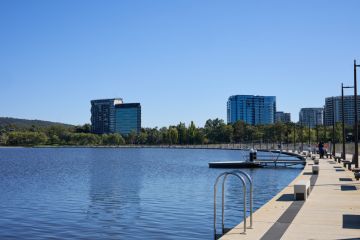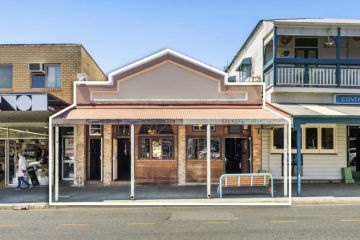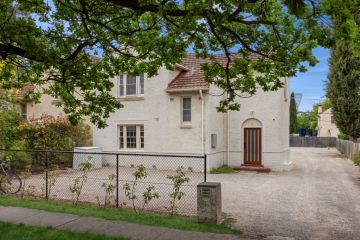Value of construction in Canberra on the rise: ABS
The value of construction work under way in Canberra is on the rise, largely thanks to the swaths of apartments being built, new data shows.
But the increasing supply of multi-residential units throughout the nation’s capital will not necessarily outstrip demand, according to one property expert.
More than $28 billion worth of construction had begun in Canberra as of the March 2016 quarter, up 13 per cent from the $25 billion recorded during the same period one year earlier, seasonally-adjusted Australian Bureau of Statistics data shows.
Multi-unit dwellings have led the residential value surge, with $291 million worth of attached dwellings under construction, up from the $87 million recorded during the March 2015 quarter (not seasonally adjusted).
The value of standalone house construction has fallen from almost $102 million in the March 2015 quarter to about $84 million this year.
Industry experts say the results reflect the ACT’s limited release of land for detached housing. However, one commentator believes there is still demand for units.
Master Builders ACT executive director Kirk Coningham said the ABS statistics were consistent with day-to-day anecdotal evidence in the industry.
Mr Coningham said demand for detached housing in Canberra was not being met, citing the almost two-thirds of packaged lots in Throsby that fell short of the reserve price at auction last month.
But the increasing number of apartments will not necessarily trump demand, with larger apartments becoming an alternative to a detached house.
“I think people fall into the trap of treating the apartment market as a single entity and it’s not – there are a lot of different apartments,” he said.
“We may see some oversupply in greenfield, outer suburbs with small apartments [but] it means the price comes down and affordability for people buying into the market.
“Chatting to members, builders and developers, larger apartments are selling off the plan straight away.
“I see those as house alternatives. A big apartment with three beds, two bathrooms and a large floor plan has become a viable alternative in Canberra.”
Mr Coningham said the construction of multi-unit housing was consumer driven because homes needed to be sold off the plan before money flowed from the bank to developers.
“People don’t build something they don’t think is going to sell,” he said.
Housing Industry Association ACT/Southern NSW director Greg Weller agreed the amount of available land in the ACT failed to meet demand for housing.
However, he expected the release of land to increase to “more appropriate” levels in the next two years, based on the ACT government’s projections.
“Clearly, there is strong demand in ACT for detached housing but it’s not being backed up by approvals,” he said.
Mr Weller said the turnover of multi-residential units being built in Canberra and snapped up by buyers was among the weakest in Australia.
“The turnover in established, detached housing in Canberra is some of the strongest in the country. Yet, when it comes to apartments … we’re one of the weakest performers.”
We recommend
States
Capital Cities
Capital Cities - Rentals
Popular Areas
Allhomes
More
- © 2025, CoStar Group Inc.







